It's a time when cleaning is approached a little differently. Cleaning the house is done all the time, but twice a year it becomes almost an event. In the run-up to Easter and Christmas, general cleaning becomes a must. And it's also during these periods that it's more noticeable than ever that furniture and wooden floors don't have the same sheen as they used to. What can be done to freshen up the finish, so that the furniture regains its original beauty? Here's a simple method that's within everyone's reach.
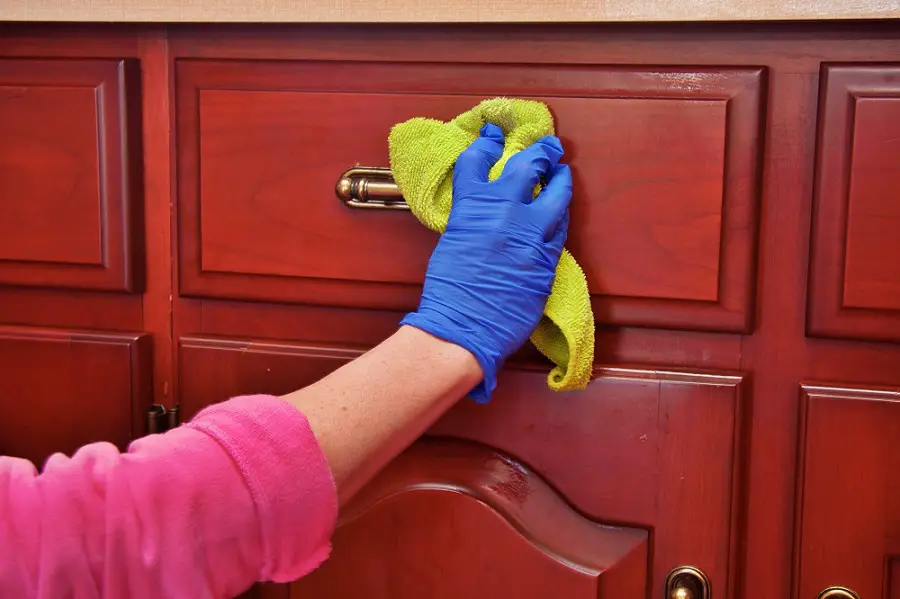
There are many recommended materials for furniture maintenance in the shops and most of them have wax in their composition. This is not bad, the furniture even looks good at first after such treatment. Over time, however, the wax builds up dust and a layer of dirt builds up on the wax and is not easily removed. The next application will not have the power to remove the deposited layer but will only deposit a new thin layer of wax on top of the existing one.
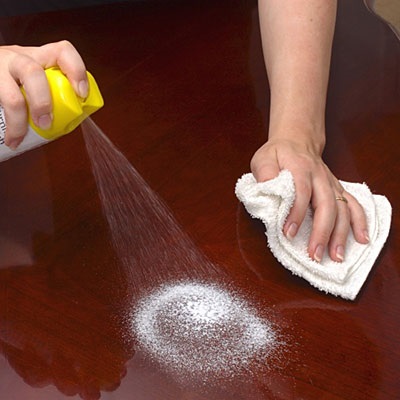
So what can be done? Nothing could be simpler. Furniture or floors are simply washed with water and detergent or soap and water. You don't have to be scared of water when it comes to wooden furniture. Indeed there are situations when the finish is attacked by water. For example, on tables finished with nitrocellulose varnish, white stains may appear from a wet glass or a hot cup, but only if they sit for a longer period. But if you wipe the surface with a cloth soaked in water and detergent, so as to take away all the dirt accumulated over time, and wipe the surface again with a dry cloth, nothing will happen apart from having clean furniture.
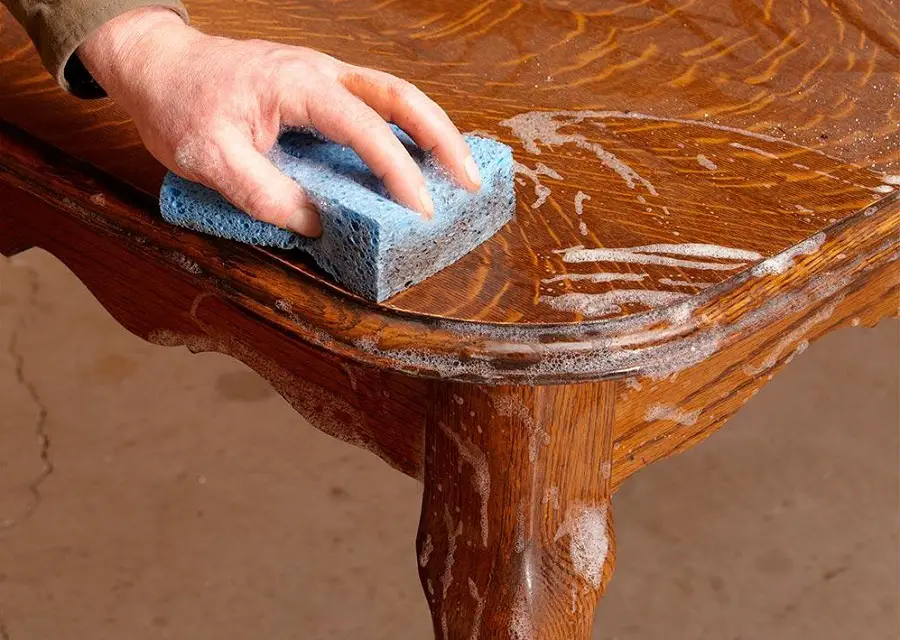
You can clean any kind of furniture in this way provided you do not use detergents or other very aggressive cleaning products. And most of all, do not use abrasive products in order to remove the dirt layer more easily. This will also scratch the lake. The easiest way is to use a soap solution. Gather the leftover soap, put it in a 300 ml jar with 100 ml of water and after a while you will get a soap gel that you can dilute with water and use as a detergent. It cleans very well and is much healthier compared to other detergents. For a nice smell you can add a few drops of lavender oil or a teaspoon of lemon juice.
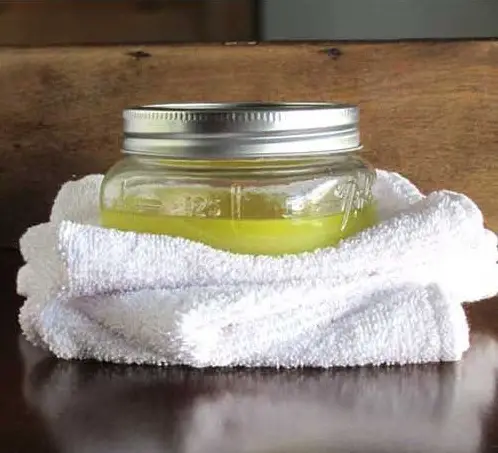
After you have washed and wiped the furniture thoroughly, allow the surface to dry thoroughly and apply a thin layer of wax transparent for wood. You can buy floor maintenance wax or any other clear wax you can find in DIY stores. It doesn't have to be anything fancy or a large quantity. A small can of wax can last you for months. Put a small amount on a clean cloth and wipe the surface of the furniture with it.
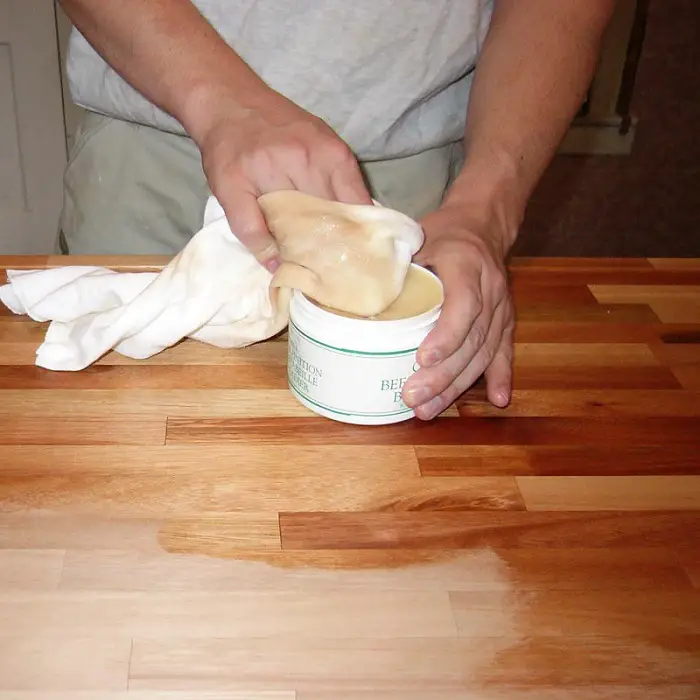
If it's too hard, warm it up a bit to make it softer (not liquid). It will be easier to spread. To better control the amount applied (if it is softer) put the wax inside a piece of cloth and squeeze it tightly (as in application of shellac), forcing the wax out through the cloth.
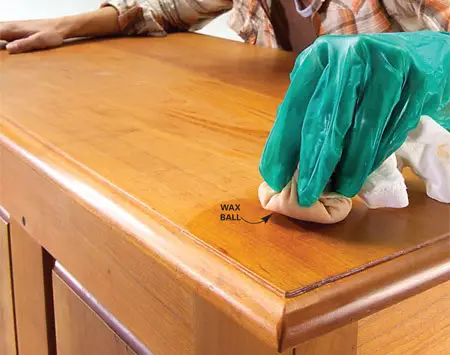
Once you have waxed all the surfaces, take a soft, clean cotton cloth or piece of felt and polish. You will end up with furniture that has the same silky sheen as when you bought it. If you don't want it to shine, don't polish but just wipe off the excess wax.
To protect your furniture and restore its original beauty, after cleaning it with water and detergent you can use a do-it-yourself solution instead of wax. Mix 3/4 cup of olive oil with 1/4 cup of white wine vinegar and a teaspoon of lemon juice. Put everything in a jar with a lid and shake well. Apply the solution to the furniture with a cotton cloth, buffing lightly. The solution has the advantage of fading white marks or scratches.
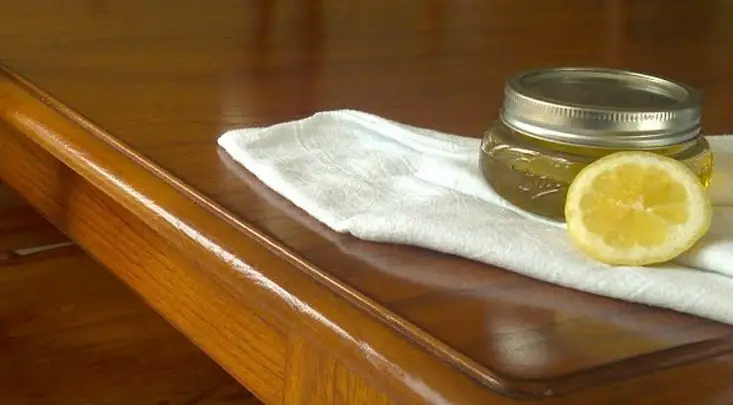
What I would like you to remember is that water does not harm furniture as long as it does not stay on it for a long time. If you just wipe the surface with a cloth and wipe it well with a dry cloth, the varnish will certainly not whiten. But to get the shine you need to apply a thin coat of wax. Otherwise the surface will remain clean but dull and lifeless.
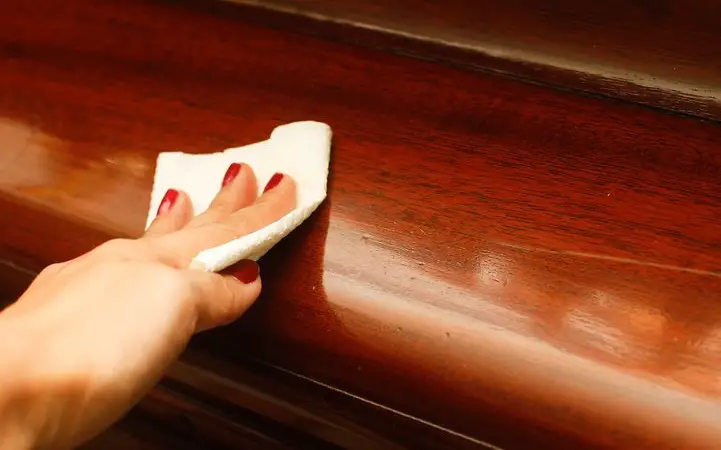
























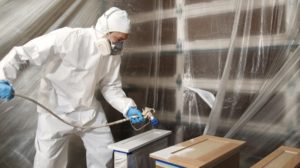
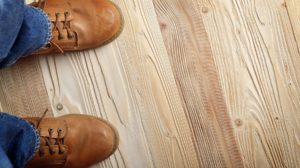
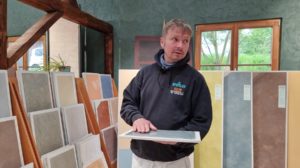
I read somewhere that wax reacts chemically with oil-based finishes, damaging them. What can you tell us?
Ordinary waxes and oils do not react with each other. Wax is even recommended as a top coat over oil to protect the surface.
Maybe it was special synthetic products with special instructions for use.
As far as ordinary wood products are concerned, this incompatibility does not apply.
All the best!
Hello! I got a new wooden table and I accidentally put an acetone disk on a rag that was on the table. The acetone got to the lacquer on the wood, melted it and there was some material left from the rag stuck to the lacquer and the table. What do you advise me to do? Now I have a stain on the table, with some threads of material stuck there.
Hello!
Try warming the hot-air lake with the hairdryer and pulling the fabric threads out of the film. Use tweezers.
The stain on the surface should also fade. After removing the threads, place a thin blanket or sheet folded in 8's (make it as thick as possible) on the surface and iron with a hot iron. Go over the surface 2-3 times and lift the blanket to let the steam out. Then wipe off the condensation with a soft cotton cloth. The stain should disappear or become smaller. If it shrinks, repeat until it disappears.
If that doesn't work, buy nitro furniture polish from DIY stores. It is the lacquer that has been applied to the table. This varnish is not resistant to solvents. Also buy a litre of nitro thinner. In a jar (a cut up PET of water, basically the bottom of the "bottle"), mix 2 parts varnish with 1 part thinner. Apply this mixture with a brush to the entire surface of the table, being careful not to run off the edges. The new varnish will soften the old one and the surface will even out, the "pit" in the varnish film and the stain will disappear. Before applying the varnish you will need to degrease the surface. Use a cloth soaked in water with dishwashing detergent, wrung out well. Clean the table thoroughly and then wipe it immediately with a clean, soft cotton cloth (an old T-shirt). Apply varnish only after it has thoroughly soaked in. Try to do the operation outside, on the terrace or balcony, so that no strong solvent smell remains in the house. If you can find it, you can also use nitro varnish spray. You must work with it outside to avoid spraying varnish in the house.
Below is a link that you may find useful.
Good luck!
https://revistadinlemn.ro/2017/04/05/cum-se-pot-scoate-petele-albe-de-pe-mobila/